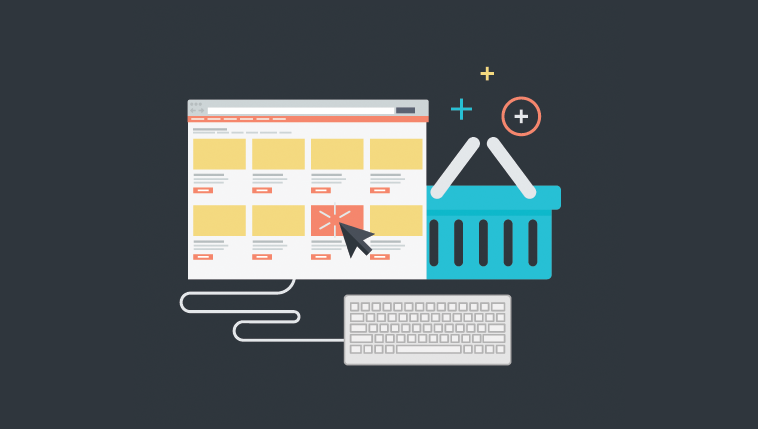
Welcome back! I thought it was time for another quick course!
Dreaming of running an ecommerce business?
That’s why today, I will give you 6 tips on how you can optimize your existing webshop or start a brand-new one.
Let’s get started and sell something online 🙂
This article is also useful for you as a customer – it helps you understand what goes on behind the scenes when you order something online.
Webshop solutions
The first thing you usually look at when starting your own webshop is which solution to choose. We’re talking about platforms here.
There are so many solutions today – and I totally understand how easy it is to get frustrated over what to choose.
Let me start by saying: Be careful not to choose a solution that locks you into an expensive subscription – it’s easy to get misled in this industry – unfortunately!
Today, I will give you my 3 top choices and briefly explain why you should pick one of them.
I don’t get any money or goodwill for mentioning these – so it’s purely based on my own experience!
What they all have in common is that they are built on open platforms, so you have the freedom to find designs yourself and don’t need a developer to build everything from scratch for you.
Shopify
Shopify (not to be confused with Spotify) must be mentioned.
There are over 100,000 webshops running on the Shopify platform today. Shopify is a “plug-and-play” system that gives you the opportunity to customize a webshop that fits your needs.
I have worked with it myself when I helped optimize the website of Etaldesign.com, and it’s a great system to work with.
Price
They run with various pricing models – so it’s a type of subscription, but the cheapest version costs around 150,- a month, which a webshop owner should be able to afford.
Magento
Magento is the most advanced solution of the 3 I’ve chosen today. Magento is the solution to choose if you’re running a large e-commerce operation – Zalando started on this platform before they moved on to their own system.
Price
The pricing is a bit different since you pay significantly more for the advanced modules.
Often, you will also need to hire a developer, which increases the cost of running the webshop.
Magento is now owned by eBay and is a major player in e-commerce. It’s also a heavy platform to work with – it can do more than Shopify but also places greater demands on the owner. It’s not a plug-and-play system in the same way.
WordPress
The last solution I’ll mention is WordPress, which you might know if you’ve started your own blog.
My advice to you:
There are many advantages to all the solutions I’ve mentioned above – I’d put it like this: Choose one solution, and commit 100% in the first few years – it takes too long to switch platforms – it’s that simple.
You won’t get more sales by switching platforms, but by marketing your product correctly.
Do you even need a webshop?
There are many reasons to focus on your brand rather than focusing on building a webshop.
In the past, you would build a webshop and then build a brand – today, the market for webshops is highly competitive, and Google Ads have become extremely expensive due to increased competition.
It might make more sense to focus on your brand first and choose other sales channels, such as online distributors, to sell your products.
Amazon
Having your own webshop could become a challenge as Amazon continues to grow.
Amazon has long been a huge player in the market – in fact, the largest in the US – and they are making significant headway in Europe by establishing warehouses that allow for next-day delivery.
So another question might be: Should you focus on branding and use Amazon as a marketplace to sell your products?
Be critical of yourself
I see many people wanting to start webshops in large industries – it could be in textiles, car equipment, or baby products. I don’t believe it’s possible unless you start your own brand or have a very rich uncle (Bill Gates rich).
Think about who your competitors are – what can you offer that they don’t?
All studies show that people want fast delivery, low prices, and a large selection.
You have to beat them on the most basic parameters, or else it will be an expensive fight.
How much will the webshop cost you?
Dig deep into your assortment. Compare the prices of the top 50 products in your market with competitors – can you compete on price?
How hard is it to scale?
It’s all about planting the flag. This is something Esben Gadsbøll from Whiteaway taught me.
If you have something that’s relatively easy to copy, like a new way of selling online (although that’s tough today), then you need to scale EXTREMELY fast.
Start now: Research how you can scale quickly – do you need more money? More people? A bigger warehouse? It’s hard to scale when you’re always behind on these resources.
You don’t only have local competitors
Many believe they only have local national competitors if they start webshop.
Dead wrong – you have the whole world as your potential market – which makes your opportunities endless, but it also means you need to consider international competitors in your analysis.
Basic setup
Payment options
No, you can’t start a webshop without accepting credit cards or expect people to send money with carrier pigeons.
Research what payment options your competitors offer, and also what payment options are offered by the biggest players in the market.
Today, it’s easier than ever to accept various forms of payment, so you should offer a wide range of options.
Shipping options
Is your shipping cost double what your competitors charge?
Research the shipping options your competitors offer and what the biggest players in the market provide. They set the standard in the market, so if you can’t match these options, people will be disappointed.
Product description & pictures
No, you mustn’t copy product descriptions and pictures from other sites.
And you shouldn’t either – the more passionate you are about your products, the more it shines through – THEREFORE: you’ll sell more!
Where you can really stand out is by giving people an experience – let them enjoy being part of your universe.
Inventory and order handling
In my opinion, Amazon and Zalando are not webshops – they are logistics businesses. Without their logistics setups, they would never have built the companies they have today. They’ve created solid setups capable of handling millions of orders.
You probably don’t need the same setup, but have you thought through your logistics?
Marketing
Should the webshop support a physical store?
There are many good reasons to have both a physical store and a webshop if you can manage both.
A physical store, to me, is an experience. The traditional clothing store with a clerk who doesn’t want to be there is dying out – it’s only a matter of time.
Experiences are the way forward – especially with everything happening in the virtual reality space right now.
Create an experience! Meet your customers on their level – what excites them? Is it coffee or special events? Scents in the store? Decor? Whiskey on a Friday? You know better than me – but you can’t just stand there and ask: “What would you like?”
Online marketing
But wait, isn’t this blog mostly about online marketing?
Yes, and of course, you need to market your webshop – otherwise, no customers will come.
However, there’s no need to delve into all these areas in this post – I could go on forever, and you wouldn’t want to fall asleep! If you’re a regular reader of my blog, you already have a good and deep understanding, but if not, I recommend reading some of the post around these topics:
- Search engine optimization (SEO)
- Big data (web analytics)
- Email (email marketing)
- Facebook (Facebook ads)
- Adwords (Google ads)
A webshop is worthless without sharp marketing – you’ll get no customers if you don’t take action. A post on Instagram and Facebook now and then isn’t enough – you need to break through!
Always keep up to date with new trends, such as ChatGPT and TikTok – both can have a significant impact on e-commerce.
Data, data, data
There is one online discipline I want to highlight: Web analytics or big data, if you prefer.
The most important thing is to have control over your data from the start. I recommend setting up Google Analytics and getting familiar with it.
Conclusion
I hope you got something out of this post about how to start your own webshop over the weekend.
- Start with a simple platform and stick with it
- Research the market – can you compete?
- Make sure you have the basics of running a business under control
- Make sure your logistics are in order
- Get your marketing going
Are you running your own webshop today, and can you relate to some of the things I wrote in the post?
Feel free to share your own experiences so we can all help each other get sharper in e-commerce.














Comments